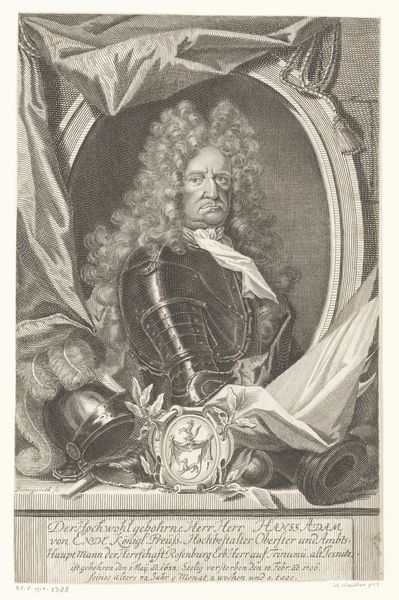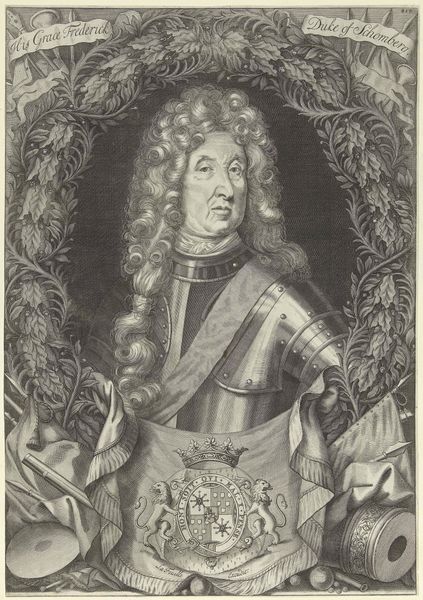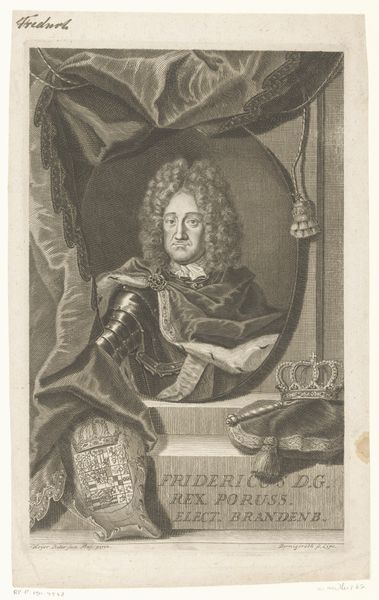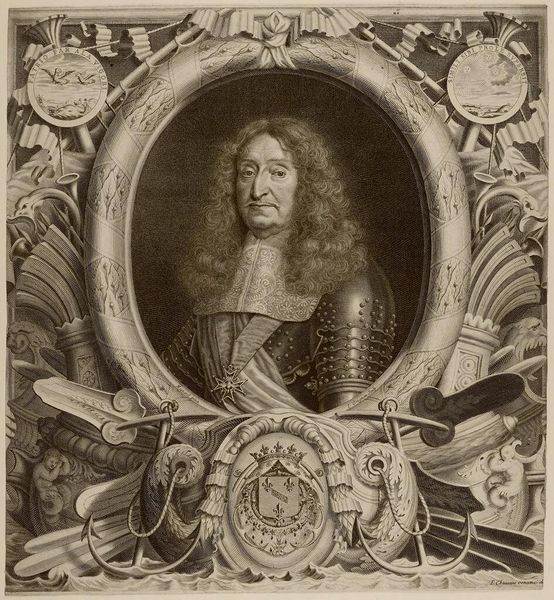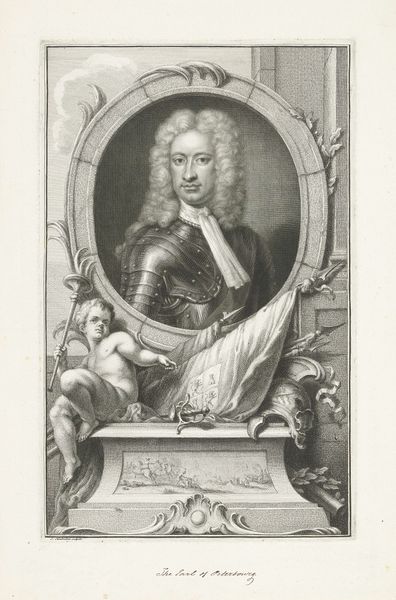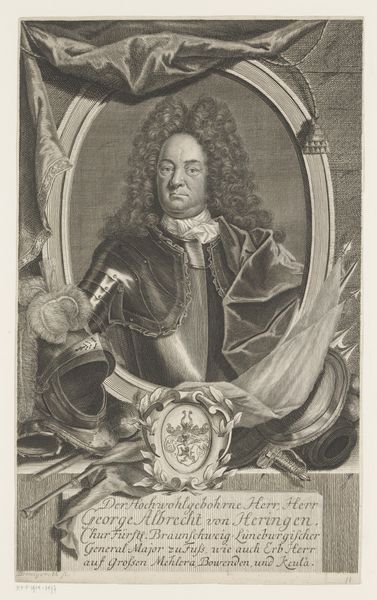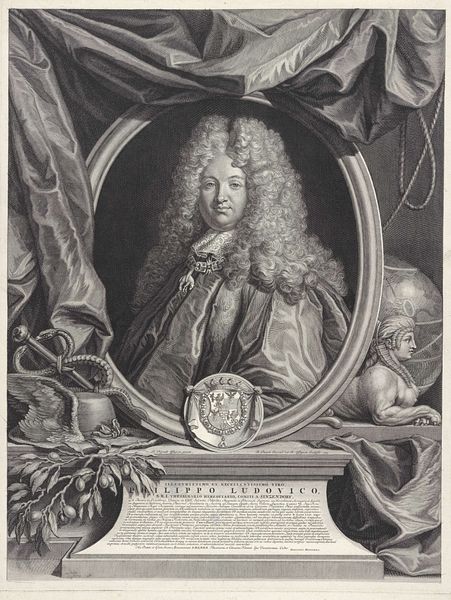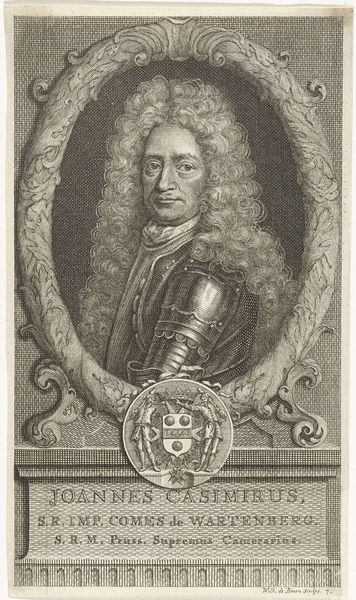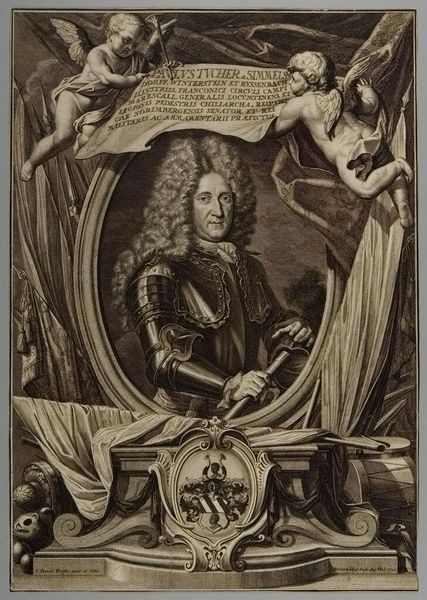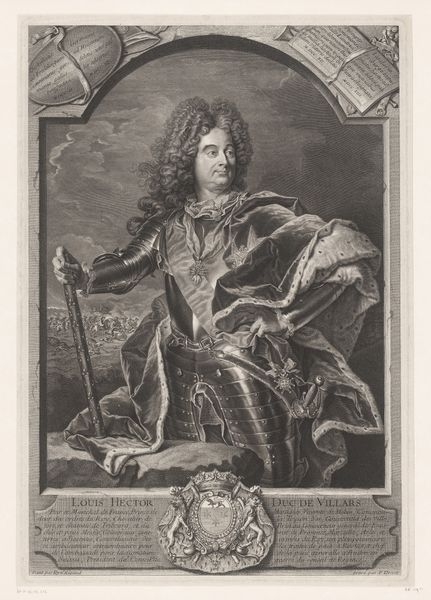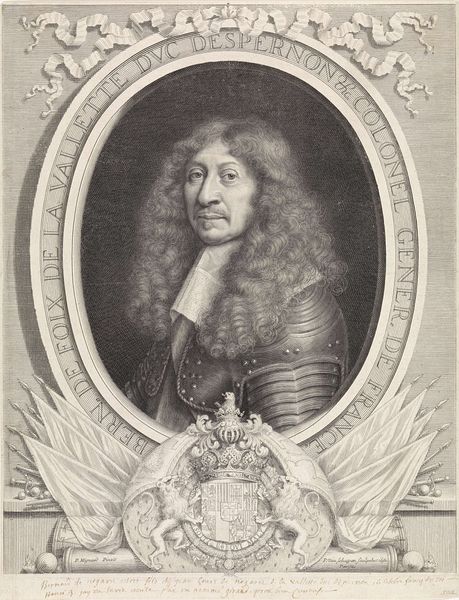
engraving
#
portrait
#
baroque
#
old engraving style
#
form
#
portrait reference
#
highly detailed
#
line
#
history-painting
#
academic-art
#
engraving
#
realism
Dimensions: height 307 mm, width 194 mm
Copyright: Rijks Museum: Open Domain
Curator: This piece, created around 1669, is a print by Pieter van Schuppen, titled "Portret van Magnus Gabriel de la Garde," currently held in the Rijksmuseum. It’s an engraving, exhibiting an impressive level of detail. Editor: It's striking! All the elements give a great sense of status, of power, but it’s almost theatrical in its composition, don't you think? There's something very crafted and ornate about its display. Curator: Absolutely. As an engraving, it reveals much about printmaking processes in the 17th century, allowing for dissemination of such noble imagery. Van Schuppen clearly had masterful control over his tools and the material to achieve such fine lines and shading. It tells us much about skilled craft labor in the Baroque era. Editor: Precisely. Portraits such as this played a critical role in constructing and maintaining social hierarchies. Displayed prominently, it reinforces de la Gardie's position and lineage. The trappings of nobility—the armor, the crest, even the Latin inscription—speak to a very specific kind of viewership, steeped in political symbolism and academic artistry. It's all so calculated. Curator: Indeed. The level of detail, from the lace on his collar to the intricate patterns of his armor, reflects the immense investment of labor and time required for such a commission, even as a reproduction. We can understand that patronage shaped artistic production then. The artist ensured the print served its function: amplifying status and communicating prestige to the intended audience. Editor: And let’s consider the wider societal context. It was made for distribution, making the aristocratic image widely known. What do you think an image like this conveyed to various strata of the public beyond his peers? Did it reinforce respect and obedience or foment resentment and inspire defiance? Curator: A provocative question, but definitely, something that has become apparent. Even seemingly simple depictions become layered once we analyze the process of creation, and their broader use and societal ramifications. Editor: A closer consideration reminds me how much of art history involves interpreting images not simply for aesthetic delight, but as embedded actors within a much bigger and potent social and political game.
Comments
No comments
Be the first to comment and join the conversation on the ultimate creative platform.
